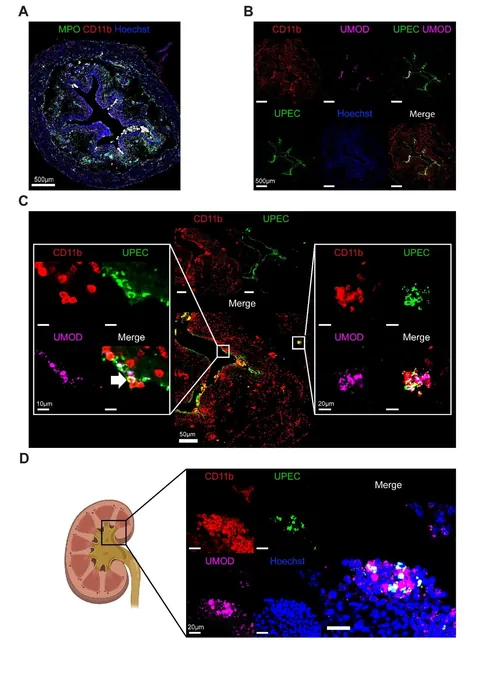
Why Kidney Infections are Rare Despite Common UTIs: Groundbreaking Study Reveals the Body's Defense Mechanism
2024-11-24
Author: Daniel
Introduction
In a remarkable breakthrough, researchers at Cambridge University have unveiled the biological secret that protects our kidneys from infections, even though urinary tract infections (UTIs) are among the most prevalent health issues worldwide. This new study sheds light on how the human body staunchly defends its vital organs against invading pathogens.
Understanding UTIs and Kidney Infections
Infections in the lower urinary tract, primarily caused by bacteria such as E. coli, can lead to discomfort and pain. However, how these infections rarely progress to more severe kidney infections, known as pyelonephritis, has long puzzled scientists. The answer lies in the body's extraordinary immune response, specifically through structures known as neutrophil extracellular traps (NETs).
Role of Neutrophil Extracellular Traps (NETs)
Dr. Andrew P. Stewart and his multidisciplinary team conducted extensive experiments that revealed NETs play a crucial role in averting potentially dangerous kidney infections. Brightly colored strands composed of DNA and proteins, these sticky NETs act like an intricate web that ensnares bacteria attempting to ascend from the bladder to the kidneys. By trapping the invaders, NETs prevent them from wreaking havoc in the kidneys, ensuring these vital organs remain disease-free.
Significance of the Study
Published in Science Translational Medicine, the study not only identified the presence of NETs in the urinary tract but also answered the burning question in UTI research: why are the kidneys often spared in infections? According to Stewart, 'These findings highlight the role of NETosis—the process of NET formation, which effectively blocks various bacterial species from ascending the urinary tract.'
Mechanism of NETosis
The mechanism of NETosis is fascinating. It begins when neutrophils, a type of immune cell, undergo a specialized form of cell death and release their contents to form the NETs. This process allows the body to ensnare harmful bacteria akin to how a spider catches prey in its web. Interestingly, the study confirmed that NETs are not just a defense strategy seen in sick individuals but are also present in the urine of healthy people, suggesting a continuously active immune defense.
Implications for Kidney Health
While UTIs are extremely common, affecting hundreds of millions around the globe annually, kidney infections are neatly confined due to this mechanism. Pyelonephritis, which can lead to severe inflammation, pain, and potentially life-threatening complications, becomes a rare outcome thanks to the efficiency of the body’s innate protections.
Research Methodology and Findings
The research team also examined urine samples from 15 healthy individuals and discovered a consistent feature: the presence of NETs interacting with a protein called uromodulin. This interaction is vital for forming robust webs that can trap harmful bacteria. Furthermore, the study redefined the understanding of standard diagnostic tests for UTIs, revealing that leukocyte esterase dipstick tests, which detect neutrophils, may actually identify those that have released NETs—thereby improving the accuracy of UTI diagnoses.
Future Directions in Research
This crucial research not only enhances our understanding of human immunity but also highlights potential avenues for developing new therapeutic strategies to prevent kidney infections. As our comprehension of these mechanisms deepens, it may pave the way for innovative treatments that harness the power of our immune system—making complications from UTIs less of a threat and ensuring kidney health for people worldwide.
Conclusion
Stay tuned for more updates on this fascinating topic as medical science continues to unveil the mysteries of our immune system!



 Brasil (PT)
Brasil (PT)
 Canada (EN)
Canada (EN)
 Chile (ES)
Chile (ES)
 España (ES)
España (ES)
 France (FR)
France (FR)
 Hong Kong (EN)
Hong Kong (EN)
 Italia (IT)
Italia (IT)
 日本 (JA)
日本 (JA)
 Magyarország (HU)
Magyarország (HU)
 Norge (NO)
Norge (NO)
 Polska (PL)
Polska (PL)
 Schweiz (DE)
Schweiz (DE)
 Singapore (EN)
Singapore (EN)
 Sverige (SV)
Sverige (SV)
 Suomi (FI)
Suomi (FI)
 Türkiye (TR)
Türkiye (TR)